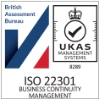Managing costs within a public cloud environment has become a focus for organisations of all sizes. Cloud services offer unparalleled flexibility and scalability, but without careful financial oversight, these benefits can quickly lead to unexpected expenses.
In this article, we explore the importance of cloud financial management (sometimes referred to as FinOps) for organisations using Amazon Web Services (AWS) and delve into effective strategies for AWS cost optimisation.
Understanding your AWS cloud costs
The hidden costs of cloud transformation are many and varied. It’s therefore essential to understand how AWS charge you. There is plenty of in-depth AWS pricing documentation describing how AWS costs work, however, the basic equation is simple:
Cost = Usage x Rate
Simply put, the total cost of utilising AWS cloud services is determined by the amount of resources you consume (usage) multiplied by the unit price (rate) charged by the cloud provider – in this case, Amazon Web Services. This formula forms the foundation for optimising your cloud spend.
Strategies for reducing your cloud usage
Controlling your cloud spend hinges on your ability to control your cloud usage and rate. You can use the following strategies to reduce the amount of cloud resources you consume:
- Scheduling: Turn your compute off when it is not in use to avoid paying for idle compute capacity during off-peak hours. For example, switch off your development and test resources overnight and at weekends.
- Auto-scaling: Implement auto-scaling policies to dynamically adjust your resource allocation based on workload fluctuations. Incorporate load balancing to distribute incoming traffic across multiple instances, optimising your resource utilisation and reducing your need for over-provisioning.
- Rightsizing: Many organisations overspend on cloud services by provisioning resources that exceed their requirements. By rightsizing resources, i.e. choosing instances, storage, and other services that closely match workload and data access demands, you can eliminate waste and reduce AWS costs significantly.
- Housekeeping: Regularly review and decommission unused or under-utilised resources, such as idle instances, unattached storage volumes, and unused network resources. Put in place automated housekeeping scripts to prevent unnecessary costs from accruing for resources that are no longer needed.
- Optimise storage: Implement data lifecycle management policies to automatically migrate or delete data based on predefined criteria, such as access frequency or age. Utilise cost-effective storage classes, like Amazon S3 Glacier, for archival and infrequently accessed data.
- Optimise data transfer: Minimise data transfer costs by strategically locating resources in the same region or availability zone, optimising data transfer routes, and leveraging content delivery networks (CDNs) for caching frequently accessed content closer to end-users.
- Re-architecting: Evaluate legacy applications and consider re-architecting them so that they’re optimised for cloud and can leverage cloud-native services, such as serverless computing, managed databases, and containerisation. Cloud-native services often offer more efficient resource utilisation and lower operational overhead compared to traditional infrastructure deployments.
Strategies for reducing your cloud rate
The following strategies can be used to reduce the rate charged by AWS for the cloud resources that you consume:
- Buying Reserved Instances and Savings Plans: Cloud providers offer discounted pricing options. AWS, for instance, offers Reserved Instances or Savings Plans, which provide a lower rate in exchange for committing to a specific usage volume over a term. Leveraging these options can lead to substantial cost savings for predictable workloads.
- Use short-lived compute: For non-critical workloads that can tolerate interruptions, take advantage of Amazon Web Services’ spot instances. These instances offer significantly lower prices compared to on-demand instances. However, they may be reclaimed by AWS with short notice.
- Region selection: Select cloud regions based on pricing differences and proximity to end-users. Some regions may offer lower pricing for certain services or have access to discounted pricing programmes, resulting in cost savings.
- Enterprise discounts: For large-scale deployments or enterprise agreements, negotiate custom pricing and volume discounts with AWS. If you’re an enterprise with substantial cloud usage, you can often negotiate lower rates based on your overall spending commitment.
- Partner discounts: Work with AWS partners to take advantage of partner programmes and agreements to access discounted pricing, specialised services, or bundled offerings provided by cloud resellers, managed service providers, or technology partners.
- Consolidate spend: Consolidate multiple accounts under a single billing arrangement to reach higher spending tiers and qualify for volume discounts. Cloud providers offer consolidated billing options that simplify cost management and provide centralised visibility into usage across accounts.
Amazon Web Services tools for cost management
AWS provides several powerful tools to analyse, monitor, and optimise your cloud costs. Some specifically help you manage and reduce AWS costs, such as the AWS Cost Explorer, AWS Billing console, and AWS Cost Management console.
Others, such as AWS Reserved instances, AWS Spot instances and AWS Auto-Scaling can help you to optimise usage and reduce costs, which we have touched on above.
You can find a comprehensive list of AWS cost management tools here. Below are a select few that we recommend adding to your AWS cost optimisation plan.
AWS Cost Explorer – Visualise, understand, and manage your AWS costs and usage over time.
AWS Budgets – Set custom budgets that alert you when your spend exceeds thresholds.
AWS Cost and Usage Report – Dive deeper into your AWS usage and costs with detailed reports.
Reserved Instance Recommendations – Identify savings opportunities with RI purchase recommendations.
AWS Trusted Advisor – Get recommendations on where you can reduce costs based on AWS best practices.
Tagging and Observability
You can add specific context from your organisation to your AWS billing data to improve insight into your cloud spend. For example, you can tag cloud resources with metadata to categorise and track resource usage across different teams, projects, or departments.
Providing observability into the billing data gives you comprehensive insight into AWS cost drivers, performance metrics, and resource utilisation. This enables you to implement targeted AWS cost optimisation strategies, proactively manage costs, and achieve greater efficiency and value from their cloud investments.
Observability plays a crucial role in effecting change, by allowing the cost of resources to be associated with organisation context, driving accountability and gamification between teams.
People, Culture and Accountability
People and culture play a pivotal role in AWS cost optimisation by shaping attitudes, behaviours, and practices which drive effective AWS cost management and efficiency in the cloud.
To create a culture of cost awareness it is important to provide cloud cost optimisation training on the strategies for reducing rate and usage to the engineers who build resources in the cloud. By baselining the knowledge of how to be cost-effective, and keeping this knowledge up to date through continuous learning, teams will naturally move to building AWS services which are cost optimal.
When combined with the right tagging and observability, the only missing piece is working with teams to ensure they balance functional changes with the changes needed to make AWS cost savings. Accountability can take many forms, from defining clear objectives and targets, setting budgets and limits, and incentivising cost savings, to cross-charging AWS cloud costs back to the owning teams.
Organisations need to create an environment where AWS cost optimisation is a shared responsibility and a key enabler of business success in the cloud.
Conclusion
Mastering Cloud Financial Management is essential for organisations seeking to optimise AWS costs while harnessing the full potential of cloud technologies. By understanding the cost equation, implementing proactive AWS cost optimisation strategies, and leveraging tools and best practices, businesses can achieve significant savings without compromising performance or scalability. With a diligent focus on cloud financial operations, organisations can confidently navigate the complexities of cloud economics and achieve sustainable AWS cost optimisation over time.
Cloudscaler offer a range of AWS cost optimisation consulting services, from advice through to running your organisations Cloud Financial Management function. Our team of experts provide in-depth analysis, actionable insights, and personalised strategies to help you achieve significant AWS cost savings without compromising on quality or functionality. By practising what we preach, we help organisations like the UK Home Office optimise cloud costs – typically helping them save up to 40% through AWS cost optimisation, and double-digit run cost savings year-on-year.
Partner with Cloudscaler to unlock the full potential of cloud infrastructure and propel your business towards sustainable growth and success.
Frequently Asked Questions
**Q: Where should I start with AWS cost optimisation?**
A: Start by analysing your usage and spend to understand your cost drivers. Look for easy wins first like eliminating unused resources.
**Q: How much can I realistically save on AWS costs?**
A: Most organisations can save 10-30% on their AWS bills with focused optimisation efforts. Cloudscaler typically achieves up to 40%.
**Q: What are some top tips for controlling AWS costs?**
A: Top tips include enforcing tagging, right-sizing instances, scaling based on demand, using auto-scaling, buying reservations, and deleting unused resources.
**Q: How often should I review my AWS costs?**
A: Review costs at least weekly to spot trends. Daily is better for organisations with variable workloads and frequent resource changes.
**Q: What tools can help me track my AWS spend?**
A: AWS Cost Explorer, Cost and Usage Reports, Budgets, and Trusted Advisor are specifically designed to monitor and analyse your AWS costs.






